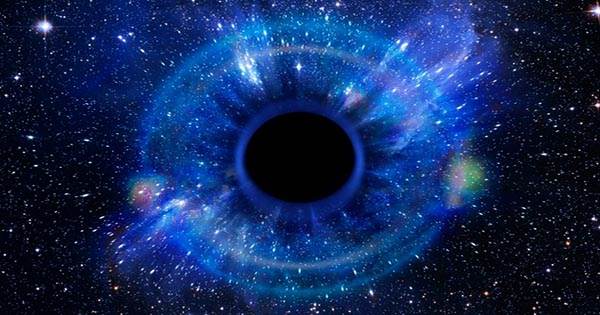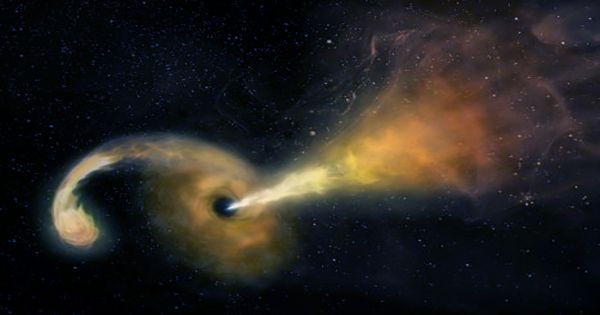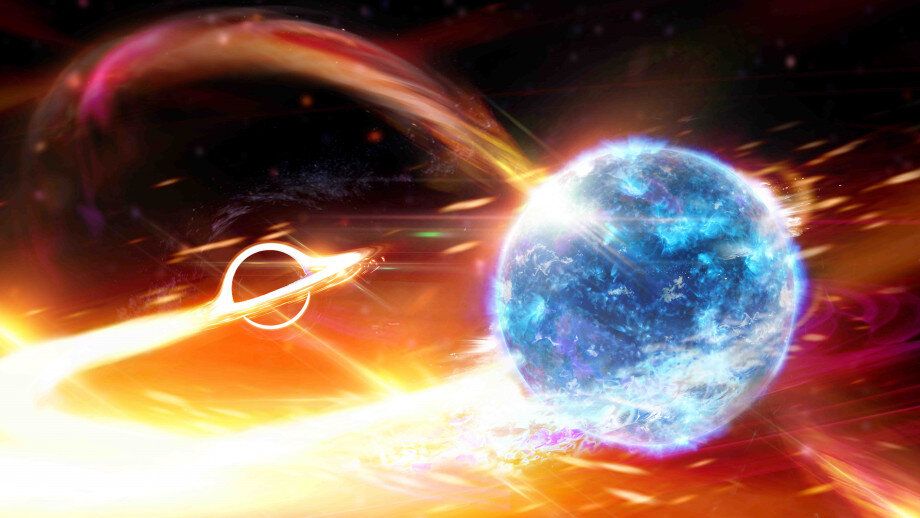A completely new type of supernova only theorized before has now been indirectly observed for the first time. Thanks to the Very Large Array Sky Survey, astronomers have found evidence of a star “going boom” prematurely due to a collision with an extremely compact object, either a neutron star or a black hole.
As reported in the journal Science, a merger-triggered core-collapse supernova has been a possibility for a while but scientists had found no evidence for one. Now, Caltech graduate researcher Dillon Dong and colleagues have established that a very luminous radio source, VT J121001+4959647, first picked up in data in 2017, was caused by a dead star crashing into its companion star, causing it to explode early.

“Massive stars usually explode as supernovae when they run out of nuclear fuel,” co-author Gregg Hallinan, professor of astronomy at Caltech, said in a statement. “But in this case, an invading black hole or neutron star has prematurely triggered its companion star to explode.” This is the first time a merger-triggered supernova has ever been confirmed.
After the initial discovery of the unusual luminous source in the VLA data, follow-up studies are consistent with a supernova remnant interacting with surrounding material, possibly ejected by the star over the last few centuries. What’s more, they found that back in 2014, an unidentified source of X-rays was observed in the same location, which may have been caused by the exploding star emitting jets of material going almost at the speed of light. This all hints at a merger-triggered core-collapse supernova.

The team believes that a long time ago the system consisted of two stars orbiting close to each other. This is a common setup in the universe, and they can remain stable for billions of years before they eventually collide. One of the stars went supernova, leaving behind an extremely compact object, either a black hole or a neutron star. Over time, the two spiraled closer and closer to each other. The compact object ripped layers off the star, creating a big donut of gas around the system and accelerating their collision.
Eventually, the companion hit the star and plunged into its core. This made the star collapse triggering a supernova explosion. In particular, the collapse released a relativistic jet of material that shined brightly in X-rays, seen in the 2014 data. The radio emission was instead produced years later, seen in 2017, when the material from the supernova slammed into the donut of gas around the system.

“The X-ray transient was an unusual event—it signaled that a relativistic jet was launched at the time of the explosion,” explained Dong. “And the luminous radio glow indicated that the material from that explosion later crashed into a massive torus of dense gas that had been ejected from the star centuries earlier. These two events have never been associated with each other, and on their own, they’re very rare.”
The VLA Sky Survey produces an incredible amount of data so discoveries such as this are truly like finding a needle in a haystack. The researchers’ approach to conducting loosely constrained searches to see what may pop up has been key in finding this event and may reveal even more unusual ones in the future.





